Mohammed AL-Mekhlafi
Joint Resource Allocation and Phase Shift Optimization for RIS-Aided eMBB/URLLC Traffic Multiplexing
Aug 05, 2021
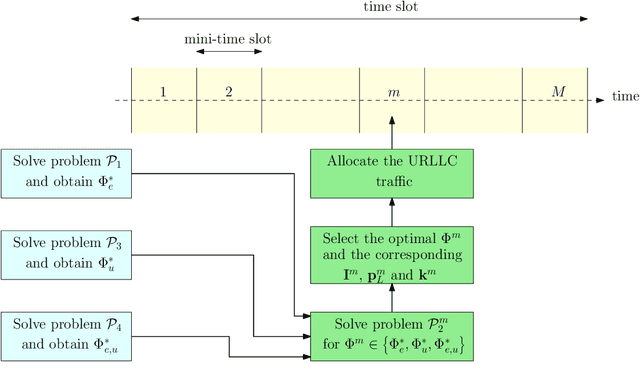


Abstract:This paper studies the coexistence of enhanced mobile broadband (eMBB) and ultra-reliable and low-latency communication (URLLC) services in a cellular network that is assisted by a reconfigurable intelligent surface (RIS). The system model consists of one base station (BS) and one RIS that is deployed to enhance the performance of both eMBB and URLLC in terms of the achievable data rate and reliability, respectively. We formulate two optimization problems, a time slot basis eMBB allocation problem and a mini-time slot basis URLLC allocation problem. The eMBB allocation problem aims at maximizing the eMBB sum rate by jointly optimizing the power allocation at the BS and the RIS phase-shift matrix while satisfying the eMBB rate constraint. On the other hand, the URLLC allocation problem is formulated as a multi-objective problem with the goal of maximizing the URLLC admitted packets and minimizing the eMBB rate loss. This is achieved by jointly optimizing the power and frequency allocations along with the RIS phase-shift matrix. In order to avoid the violation in the URLLC latency requirements, we propose a novel framework in which the RIS phase-shift matrix that enhances the URLLC reliability is proactively designed at the beginning of the time slot. For the sake of solving the URLLC allocation problem, two algorithms are proposed, namely, an optimization-based URLLC allocation algorithm and a heuristic algorithm. The simulation results show that the heuristic algorithm has a low time complexity, which makes it practical for real-time and efficient multiplexing between eMBB and URLLC traffic. In addition, using only 60 RIS elements, we observe that the proposed scheme achieves around 99.99\% URLLC packets admission rate compared to 95.6\% when there is no RIS, while also achieving up to 70\% enhancement on the eMBB sum rate.
A Downlink Puncturing Scheme for Simultaneous Transmission of URLLC and eMBB Traffic by Exploiting Data Similarity
Dec 27, 2020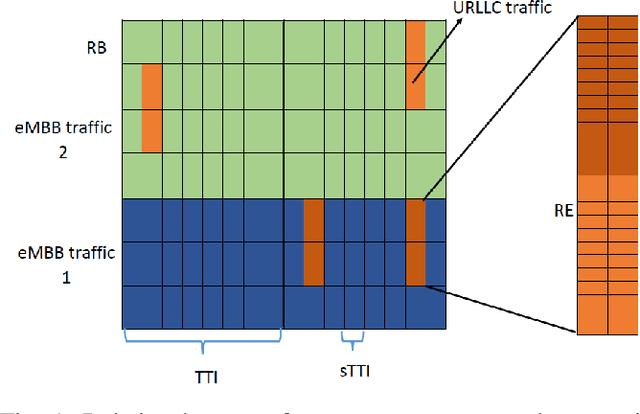
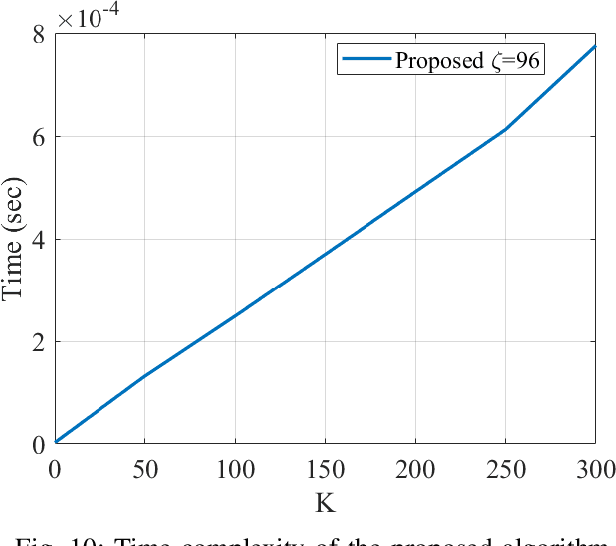
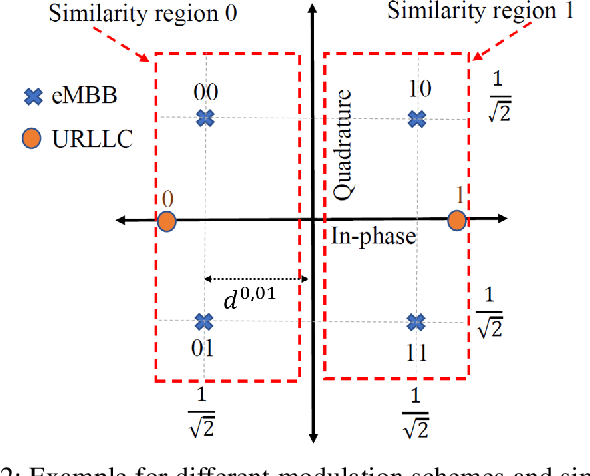
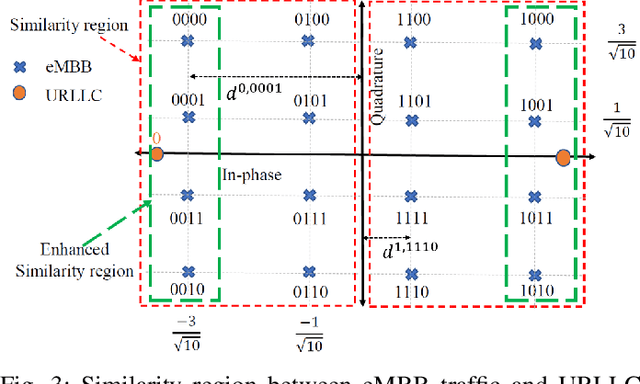
Abstract:Ultra Reliable and Low Latency Communications (URLLC) is deemed to be an essential service in 5G systems and beyond to accommodate a wide range of emerging applications with stringent latency and reliability requirements. Coexistence of URLLC alongside other service categories calls for developing spectrally efficient multiplexing techniques. Specifically, coupling URLLC and conventional enhanced Mobile BroadBand (eMBB) through superposition/puncturing naturally arises as a promising option due to the tolerance of the latter in terms of latency and reliability. The idea here is to transmit URLLC packets over resources occupied by ongoing eMBB transmissions while minimizing the impact on the eMBB transmissions. In this paper, we propose a novel downlink URLLC-eMBB multiplexing technique that exploits possible similarities among URLLC and eMBB symbols, with the objective of reducing the size of the punctured eMBB symbols. We propose that the base station scans the eMBB traffic' symbol sequences and punctures those that have the highest symbol similarity with that of the URLLC users to be served. As the eMBB and URLLC may use different constellation sizes, we introduce the concept of symbol region similarity to accommodate the different constellations. We assess the performance of the proposed scheme analytically, where we derive closed-form expressions for the symbol error rate (SER) of the eMBB and URLLC services. {We also derive an expression for the eMBB loss function due to puncturing in terms of the eMBB SER}. We demonstrate through numerical and simulation results the efficacy of the proposed scheme where we show that 1) the eMBB spectral efficiency is improved by puncturing fewer symbols, 2) the SER and reliability performance of eMBB are improved, and 3) the URLLC data is accommodated within the specified delay constraint while maintaining its reliability.
 Add to Chrome
Add to Chrome Add to Firefox
Add to Firefox Add to Edge
Add to Edge